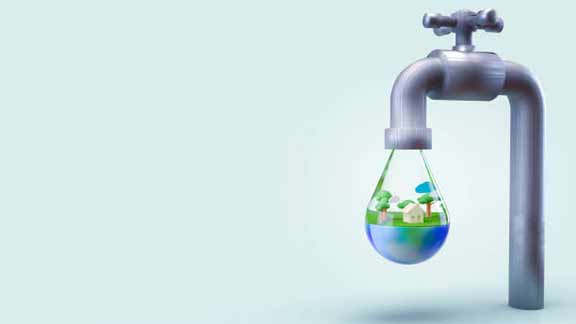
Are your home’s high water bills eating you alive, and are you looking for smart ways to reduce your water usage?
If you said yes, you are in the right place.
In this brief post, we explain 12 simple but highly effective tips and tricks for reducing your water consumption.
Some of these tips are already known, while others are novel tricks you have never heard of.
The tips are divided into three categories:
- Tips that improve the efficiency of your plumbing fixtures.
- Tips that promote lifestyle changes that will help you conserve water inside your home.
- Tips that reduce water use outside the house.
12 tips to help you save water and money in your home
Check your plumbing for leaks
Do not underestimate the impact of one dripping faucet or running toilet on your water bills, advises Penny Realty Management. Leaky bathroom fixtures waste vast amounts of water every day. Leaky pipes, appliances and pipe connections are also a huge source of water wastage in the home. Eliminating these leaks will help you save water.
Install low-flow plumbing fixtures
Low-flow plumbing fixtures – toilets, showerheads and faucets – use considerably less water than regular ones but without any negative impact on user experience. For example, compared to older toilets that use as much as 3.5 to 7 gallons per flush, high-efficiency toilets only use 1.28 gallons or less per flush.
Upgrade your household appliances
One EnergyStar or WaterSense-rated appliance in your home – washer, water heater or dishwasher – can save as much as $380 per year. These savings are due to more efficient use of water and electricity. With an energy-efficient washer in the laundry room, you can save 7,000 gallons every year.
Upgrade your irrigation system
Most of the water from your irrigation system does not reach the plant roots; up to 50% of that water is lost to wind, evaporation and runoff. Efficient irrigation systems save up to 145 gallons of water every week. In place of sprinkler systems that wastewater, you will want to install a drip irrigation system.
Save water in the bathroom
Small changes in your bathroom habits can result in major reductions to your home’s water usage. Instead of baths that use up 70 gallons of water, take quick 10-minute showers to save 25 gallons. To save even more water, turn off the shower or faucet when brushing your teeth, soaping up or shampooing.
Only run full loads
This applies to doing the laundry and washing dishes. Waiting until you have a full load will let you wash the maximum number of clothing or dishes per cycle. Running partial loads in both the washing machine and dishwasher is a waste of water and energy.
Wash veggies and fruits in a tub
Instead of washing fruits and veggies directly under an open faucet, place a colander inside a basin or large pot, fill it with water and wash your produce there. Lift the colander to separate the produce from the water. This method lets you save water. You can water your plants with dirty water.
Save and reuse cooking water
We use more water during meal preparation and dispose of most of it later. But if you could save that water and find ways to reuse it, you would save yourself a lot of money. Pasta water, for instance, can be reused for cooking. You can also use it to water indoor plants and garden beds.
Soak dirty pots and pans
Do not rinse pots and pans that are too big or dirty to put inside the dishwasher. To soften the dirt, soak them in water. You can save up to 140 gallons of water every week when you do this. You may find other uses for the water when you are ready to wash your pots.
Harvest rainwater in a barrel
Collect rainwater to water indoor plants, irrigate the lawn and water your garden beds. In some states, such as Texas and Rhode Island, the government even offers tax incentives to homeowners who install rainwater harvesting systems on their property.
Plant native and drought-tolerant plants
Drought-resistant plants use less water; they don’t need watering but can survive on rainfall alone. Selecting native plants for your landscaping also helps to save water since these plants are adapted to local climate conditions. Native plants don’t need a lot of watering.
Clean driveways and sidewalks with a broom
Each time you wash your driveway, you use nearly 150 gallons of water. Meanwhile, all you need to clean the driveway or sidewalk is a sturdy broom. You can limit the number of times you wash the driveway to maybe once in 2-3 months. As a bonus, sweeping the driveway with a boom is good exercise.
Do you have other beneficial tricks you use to save water in your home? We would like to hear about them.

